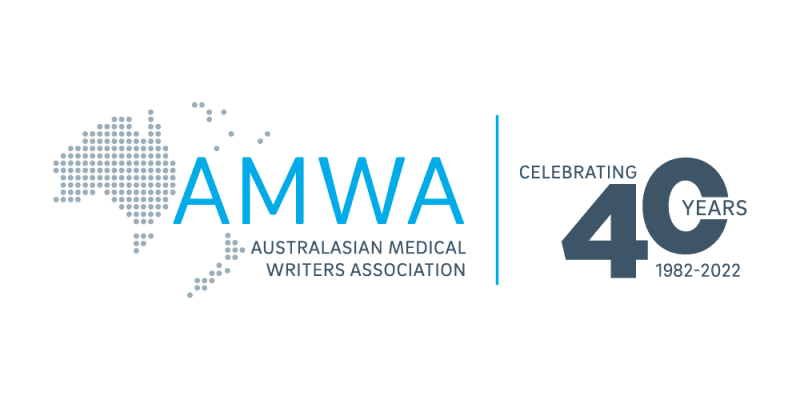Becoming a freelance medical writer
 When current AMWA secretary Dr Sarah McKay left the heady world of neuroscience research to try her hand at medical writing, she wasn’t sure it was the right decision, and blogged about the experience here. Four years later, she now knows she made the right choice, and is happy to share a few tips. First published on Sarah’s blog Nov 2012.
When current AMWA secretary Dr Sarah McKay left the heady world of neuroscience research to try her hand at medical writing, she wasn’t sure it was the right decision, and blogged about the experience here. Four years later, she now knows she made the right choice, and is happy to share a few tips. First published on Sarah’s blog Nov 2012.
In my last post I wrote about my thoughts on leaving medical research to pursue a career in science and medical writing. And I’m often asked about how exactly I made that switch.
Here are five tips that worked for me when I first started out as a freelance medical writer.
1. Build up a portfolio of writing. This really should go without saying. When I was applying for jobs (see Tip 2), I was always required to provide samples of my writing. I had a few academic publications, but I knew it was more important to show that I could communicate complicated scientific and medical ideas to a non-expert audience. One way to get published is to write for free. There are hundreds of publications out there that accept writing and don’t pay (and plenty of freelance writers who won’t pitch to them for for that exact reason).
So one of the first things I did was write a feature article for a spinal cord injury magazine – I pitched my idea (and myself as somewhat of an expert), the editor said ‘yes’, and there I had it —a publication in a magazine communicating a complex scientific topic to a non-expert audience. I learnt all about pitching to magazines from Valerie Khoo (see Tip 3).
2. Get some experience in the industry. After I worked up the courage to look for science communication jobs, I found there were plenty of medical writing positions advertised that I was well-qualified for. Luckily, I landed a job in an agency with a great boss who was nothing but encouraging about my writing, excellent at editing (so SO important!) and entrusted me with a wide variety of interesting projects. Once I figured out how the industry worked, who was who and what the acronyms meant (CPE/CME – anyone?), I was part-way there.
3. Get inspired. A couple of years ago, I went to an event held by the Australian Science Communicators association at which Valerie Khoo and Bianca Nogrady spoke about how to make it as a freelance science writer. Valerie runs the Sydney Writers’ Centre where I completed a couple of writing courses (and in the process learnt how to pitch to magazines).
But the light bulb moment for me was when Bianca talked about her freelance career and how it gave her something to think about when she was hanging out the washing. At that point in my life, I had a 6 month old and a 2 year old — basically, that was all I needed to hear!! That night was pivotal in setting me on the path to this fabulous freelance life.
I’m an avid fan and never fail to be inspired by Marie Forleo (who helps you create a business and life you’ll love) and I am member of a various online freelance writing forums and small business networking groups. And of course there are some amazing blogs out there (sometimes I think I could spend all day every day reading blogs).
4. Your business isn’t a hobby. My very wise husband said to me that if I was serious about setting myself up as a freelance medical writer then I needed a business plan, and even more importantly, that I should always to treat my writing as a business, not a hobby.
Now, there are hundreds of resources out there on how to set up a small business from home and to be honest I started off with the very dull Australian government business website . I spent a good couple of months reading books (this one was particularly helpful) and blogs, arranging an ABN, getting business cards printed, setting up a website and signing up to freelance writing forums and associations (and all that boring stuff). But it paid off, because once I started marketing myself it looked like I knew what I was doing and was already in business! Probably a good case of faking it till you are making it!
5. Network with people you already know. My very first freelance writing job came from the agency that employed me before I had my kids. My second writing job came via an old colleague who I reconnected with via LinkedIn (I still regularly take on work for this client too). And, my third writing job came from a colleague of someone in the agency I first worked for.
Nowadays, many of my clients find me, or I find them, using LinkedIn. I follow one golden rule with LinkedIn – never connect to a potential contact without a purpose and a personal message. Mindlessly collecting connections isn’t networking.
So it turned out that I could start up my business doing what I loved to do most. I heard the best quote today from Mastin Kipp who writes the blog ‘The Daily Love’: “Your bliss and your purpose are the exact same thing.” I think that pretty much sums it up!
Member Spotlight - Neena Bhandari
Neena is a Sydney-based freelance foreign correspondent with a focus on health and disability issues. Read about how her own lived experience has driven and shaped her career, and how a unique piece of writing helped facilitate policy change.
Read more
Read more

 When current AMWA secretary Dr Sarah McKay left the heady world of neuroscience research to try her hand at medical writing, she wasn’t sure it was the right decision, and blogged about the experience
When current AMWA secretary Dr Sarah McKay left the heady world of neuroscience research to try her hand at medical writing, she wasn’t sure it was the right decision, and blogged about the experience